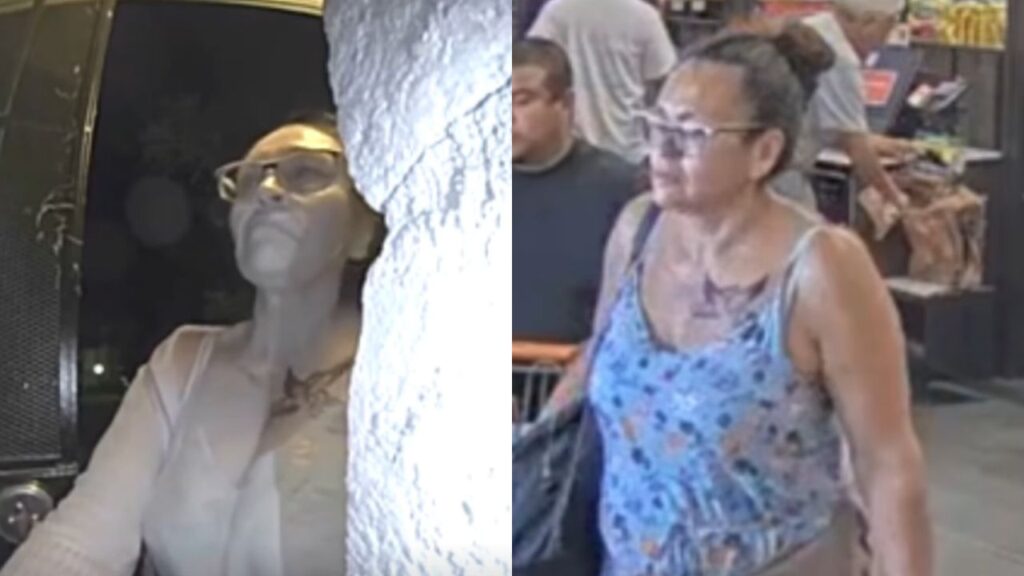Share
|
Getting your Trinity Audio player ready...
|
On Monday, California’s experiment with treating dangerous mental illness will begin in seven counties. Called CARE Courts — from the Community Assistance, Recovery, and Empowerment Act — those suffering from schizophrenia or other psychotic disorders can be compelled into treatment.
While the plan originally included substance abuse disorders, drug addiction has since been removed.
The law grants family members and even first responders the power to send people living with schizophrenia into care, which can include a locked mental health facility or medication.
The seven initial counties include Glenn, Orange, Riverside, San Diego, Stanislaus, and both the city and county of San Francisco. Los Angeles County will introduce its CARE Courts in December. The rest of the state will follow in December 2024.
“Mental illness by design or by definition is you don’t know that you’re ill,” says Amanda Nugent-Divine, CEO of Kings View, a Fresno nonprofit providing behavioral health treatment, among other services.
“We believe in a society where people aren’t forced to take medicine they don’t want to take or be hospitalized when they don’t want to be hospitalized, we really value freedom. That is a good thing, but it does allow for people to be ill and untreated and that creates difficulty to access.”
While not limited to those experiencing homelessness, the law in part aims to address housing instability by providing care to those who can’t help themselves.
But in the past few decades, investment in mental health facilities has regressed in no small part due to the stigma around them, said Nugent-Divine. Directors closed the Kings View inpatient treatment facility in the ’90s.
Counties are entering the unknown in terms of how many people they will need to care for and whether they have the resources to provide treatment.
And, mental health experts have to navigate a system that’s never been tried before. Ideally, mental health experts want patients to elect for their own treatment, says Nugent-Divine.
“But we also know that people need to be kept safe and that people that are not connected to reality because of a psychotic disorder can often, not always, but often cannot keep themselves safe,” said Nugent-Divine.
A Look at Riverside County, Which Is Starting CARE Courts
California officials selected Riverside County to be among the first cohort of counties to implement CARE Courts.
Eleven months ago, the Riverside County Superior Court, the Behavioral Health Department, the Housing Workforce Solutions Department, the Riverside County Public Defender, and a host of other agencies from the 26 cities and 13 hospitals in the area joined together to develop a plan, said Brooke Federico, director of communications with Riverside County.
CARE Court treatment applies only to people whose mental health is deteriorating and unlikely to survive without supervision.
“It’s a very specific population,” Federico said.
Referrals from a family member or caretaker can be made through the Behavioral Health department or the court, Federico said.
Qualified individuals include a spouse, parent, sibling, grandparent, or “other person who puts themselves in the position of assuming obligations of a parent,” Federico said.
Law enforcement, health care providers, or community service providers who have regular contact can also make referrals.
Once a referral is made, a licensed therapist meets with the person and comes up with a plan for treatment. A judge hears the treatment plan and decides whether to implement the plan or not. That could mean intensive, group, or individualized therapy. It could mean housing. It could also mean medication.
While a judge can order medication, Federico said medication cannot be forced onto someone.
“Everyone has different needs,” said Federico. “Somebody may have stable housing and another person may not have stable housing. So what an individual’s treatment plan or ultimately a care plan which comes out of this assessment process is tailored to the individual.”
Riverside County courts selected a judge to oversee all CARE Court decisions. Judge Magdalena Cohen attended four different training courses in preparation for the program.
Even though CARE courts are not as restrictive as court-ordered conservatorships, said Federico, that experience does give judges some background in deciding what’s best for an individual.
Entering a New World of Mandated Care
Funding for the program largely comes from the individual counties, said Federico. The state did allocate some money from the budgeted $15 billion for homelessness and annual $11.6 billion for mental health services.
But the degree to which the program will be utilized is largely unknown to officials, said Federico.
“We don’t know how many referrals or people into CARE Court we will actually receive,” Federico said.
The state gave estimates of 12,000 people entering the program, which for Riverside County could amount to 500 people, Federico said.
Point-in-Time Counts indicate that like in many other California counties, the number of homeless people in Riverside County is increasing.
Counters tallied 3,725 homeless people in 2023 in Riverside County, up from 3,316. Despite having half of Riverside County’s population, the Point-in-Time Count for Fresno and Madera counties estimates 4,493 people experiencing homelessness, up from 4,216.
State Funding Based on 1991 Population Levels
But funding is still limited, said Federico. County behavioral health budgets cover the cost of care for one year. Additionally, court orders can only last one year. After that, the patient transitions back to society, Federico said. The county will then provide care as it has historically for those who need more support.
Like Fresno County, Riverside County has experienced a population boom in recent years. However, California calculates the funding for behavioral health based on 1991 population estimates, Federico said. Thus Riverside County has a $150 million shortfall, not including what’s needed for CARE Court funding, Federico said.
“We’re being funded based on what our population was back in 1991, even though here in the 2020 census, we were the fastest-growing county in Southern California and one of the fastest in the state and in the country,” Federico said.

Gearing up to Meet the Expected Demand
Nugent-Divine said that for people who come under the jurisdiction of the CARE Courts, treatment often will be provided in a locked facility. Such places might conjure images from horror movies or “One Flew Over the Cuckoo’s Nest,” but that’s not how facilities are run now, she said.
“However, there’s still a facility, it’s not home, it’s not community, it’s a facility and it’s locked,” Nugent-Divine said.
Meeting that need requires housing, though. In the last 18 months, 600 new behavioral health beds opened in Riverside County. Even with that, Federico was not sure if that was adequate. Riverside County officials are also working to provide in-home care for those with adequate housing.
In response to public perceptions around mental health facilities, investment pulled back significantly across the past few decades, Nugent-Divine said.
“I think sometimes we overcorrected and I feel that we got rid of a lot of the inpatient units because they were sort abhorrent to us back then,” Nugent-Divine said.
Kings View closed its inpatient facility in the ’90s, as did others at that time, Nugent-Divine said. In addition, University Medical Center, which provided inpatient care for behavioral health disorders, closed in 2007.
Fresno County now contracts with private companies and nonprofits to provide inpatient treatment.
The department has built 307 housing units with “hundreds more under construction and planned,” said Ahmad Bahrami, equity services manager with the Fresno County Department of Behavioral Health.
The department also has a master leasing program which funds 68 units. An $18 million grant from 2016’s No Place Like Home program under Proposition 2 helps with housing needs, Bahrami said.
But CARE Courts could be in high demand when doors open. CalMatters reported in August that in Orange County, dozens of family members lined up to see if family members were eligible for care — two months ahead of the program’s start date.
Fresno County Watching Initial Rollout
Fresno County officials are watching how the Phase I counties will roll their programs out, Bahrami said.
A steering committee meets every month involving the Behavioral Health Department, the Probation Department, the Fresno County Superior Court, The Fresno County Public Defender, Fresno County Counsel, and Fresno County Administrative Office.
“Fresno County is working to understand actual costs for such a program/services, how to estimate the total number of participants, what will be capacity and resources that can be leveraged and support the project,” Bahrami said.
RELATED TOPICS:
Categories


















